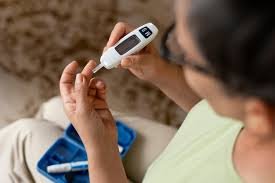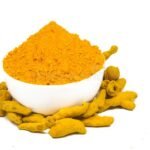WHAT IS DIABETES CONSIDERED TO AYURVEDA?
Our lives are very automated in today’s modern world. Our lives are heavily influenced by technology. This makes us inactive and sedentary. To support this sedentary lifestyle we consume many processed foods, fast foods, and sugary drinks, which can harm our health.
Diabetes is caused by an abnormal glucose level within the blood. This is also known as hyperglycemia (or high blood sugar) or diabetes. The pancreas releases insulin when blood sugar levels increase. It can be described as a metabolic disorder in which a person has high blood sugar (or blood glucose) levels. This could be due to an insufficient insulin supply or a failure of the body to produce insulin.

Diabetes generally can be broken down into two types.
Type 1 Diabetes Mellitus
Diabetes is an autoimmune condition where the body’s immune defenses destroy insulin-producing cells within the pancreas. Blood sugar and glucose levels rise. The symptoms of diabetes include frequent urination and intense thirst.
2. Type 2 Diabetes Mellitus
This usually occurs as we age and gain weight. This situation causes insulin to be less sensitive than it should be. Type 1 signs include fatigue, vision impairment, slow wound healing, and vision disturbance.
Ayurveda lists the classically related causes of diabetes.
Inactivity
Sleep deprivation
Excessive yogurt consumption
Soups made with meats from marshy, marine, and domestic animals
News about sweet food
All other Kapha Inducing Routines
Ayurvedic Herbs for Diabetes
Ayurvedic herbs could help with Ayurvedic treatments for diabetes. Here is a list of Ayurvedic herbs that can be used to manage diabetes.
Amla
Amla, the Indian gooseberry, can be used as an Ayurvedic herb. It is high in vitamin A and antioxidants which makes it great for controlling diabetes. Amla is also rich in chromium. This mineral helps with carbohydrate metabolism. Chromium is also able to regulate blood sugar by allowing your body to respond appropriately to insulin. Amla also has iron, phosphorous, and calcium. They are essential for the body to absorb insulin and maintain a healthy blood sugar level.
Triphala
Triphala can be described as a powdered mix of Haritaki, Amla, and Bibhitaki. The Sushrut Samhita mentions triphala in 1500 BC. It can be used to treat constipation, improve digestion, and achieve the correct blood sugar balance. It’s rich in antioxidants which can help to reduce oxidative damage. Triphala Tablets may be consumed if Triphala Churna does not appeal to you.
Fenugreek seed
Fenugreek can be found in many Indian restaurants. You can lower your blood sugar by soaking two tablespoons in water at night and then drinking the seeds in the morning.
Cinnamon
Cinnamon, a natural bioactive spice, can help to maintain blood sugar levels. It’s easy to consume. You just need to add half a teaspoon of ground cinnamon to a glass full of water. Then, mix it all and drink slowly. This process can be repeated up to once per day.

.
Buttermilk and Aloe Vedra
It may help maintain low blood sugar levels by using aloe verde. A few slices of fresh aloe Vera leaves can be cut and eaten with buttermilk.
Drumsticks
Drumsticks, a popular ingredient in Indian subcontinent recipes, are very common. The best thing about drumsticks is their ability to help with blood sugar management. Take a few slices and add them to a jug with water. You can drink this jug whenever you feel thirsty.
1. Apple Cider Vinegar
Acetic Acid is the primary compound found in ACV. It is believed that it is responsible for many of its health advantages. ACV has many health benefits. There are numerous evidence-based methods to use it. Take 2 tablespoons of ACV before going to bed to lower your fasting blood sugar. ACV can also be taken with carbohydrate-rich meals, where it can lower the glycemic load. I tell my patients to drink ACV by itself, before any meal, or add it to salad dressings or teas.
2. Fiber and Barley
Fiber can help lower insulin and blood sugar. It is recommended that you consume around 30g of fiber daily. Americans consume between 6-8 grams per day. This is not enough. Metamucil (psyllium husk) is a fiber supplement that can be taken, but it’s best to eat your vegetables. Barley is high in fiber and high in protein. There are lots of studies that support its role as a food rich in nutrients, including insulin, blood sugar, cholesterol, and general inflammation. Barley doesn’t require soaking. It cooks quickly on the stovetop with little water and salt.
3. Chromium
A deficit in chromium can lead to a reduction in glucose metabolism and is most commonly found in brewers yeast. Evidence supports chromium as a low-level nutrient for blood sugar and A1c. If you have kidney disease, be careful with this supplement.
4. Zinc
People suffering from diabetes are more likely to be zinc deficient. Studies have shown that zinc supplementation can reduce blood glucose and A1C levels, have an antioxidant effect, lower blood insulin, and help with some complications of diabetes. High doses of zinc can interfere with the absorption of minerals such as copper so make sure you ask your pharmacist for the right dosage.
5. Aloe Vera
The aloe vera sap is known for its relaxing properties. The gel should be strained to extract the liquid. The gel, which is the mucilaginous content in the leaves, is becoming more popular. You don’t want to end up in the toilet!
6. Berberine
This is the one I love most. It can be found among plants such as Oregon grape roots, goldenseal, Oregon gold seal, and Coptis. Recent evidence supports its ability to lower blood sugar and Hba1c. You should not take this herb while you are pregnant as it can disrupt the metabolism of other pharmaceuticals.
7. Cinnamon
An indulgence that is medically good for lowering your blood sugar and cholesterol levels.
8. Fenugreek
This seed is used widely as a food spice and has been used around the world for centuries because of its medical benefits, including lower cholesterol and better blood sugar levels. You don’t have to worry if your urine smells like maple syrup.
9. Gymnema
The use of this herb for centuries has been documented in India. Its medical benefits include improved glucose metabolism, insulin levels, and adjunctive treatment to traditional pharmaceuticals. Because this botanical is synergistic with other medicines, it is important to monitor your blood sugar carefully to avoid hypoglycemia.
10. Nopal
Ever seen nopales in your favorite Mexican restaurant? You can now order them, and they will help lower your blood sugar. Nopales are the nopales of the prickly Pear cactus. They are delicious when prepared correctly. They taste great with eggs or mixed in a salad.
Here are some key takeaways
It is vital to ensure a healthy lifestyle by managing diabetes well. We have discussed the links between Ayurveda (and diabetes) and shed light on specific Ayurvedic ways to manage it. Here’s what we learned.
• Type 1 diabetes and type 2 diabetes are different.
• There can be many reasons for Type 1, Type 2 Diabetes, and Gestational Diabetes.
• Ayurveda is a holistic way to manage and treat diabetes.
• Ayurveda also recommends a variety of healthcare strategies that could help with diabetes.
• Triphala and Amla are Ayurvedic herbs, which can help you manage your diabetes.
• You can also keep your blood sugar levels in control with various home remedies.
Conclusion
Our home kitchen contains most of the above-said spices and these can be added to our daily dietary plan to avoid or maintain our sugar level to stay healthy. This will help us to live a healthy lifestyle.
Image Source: Freepik



